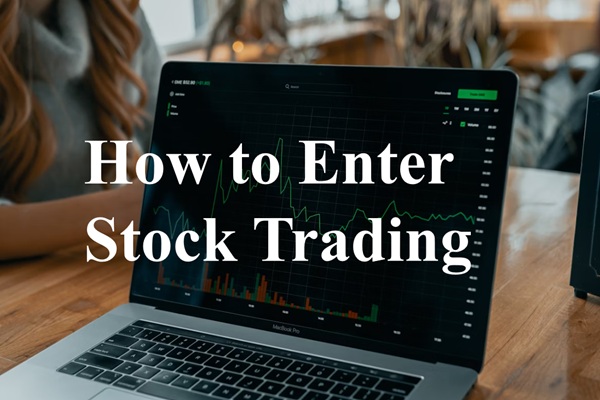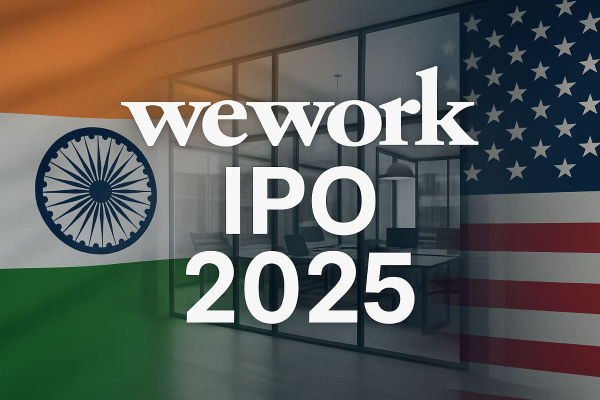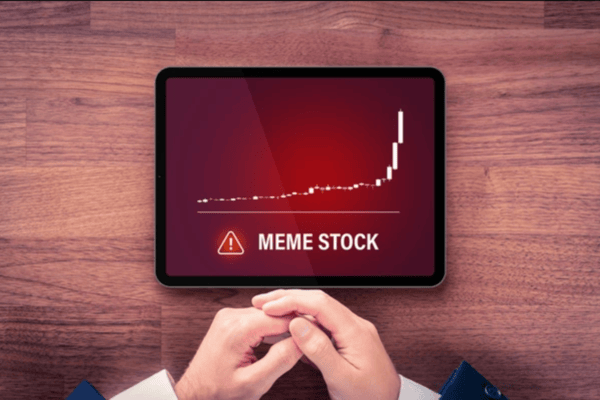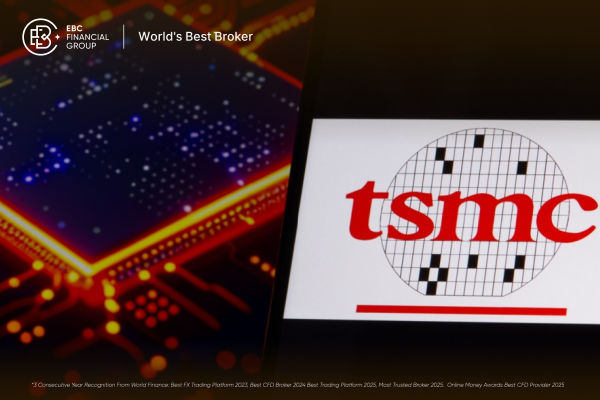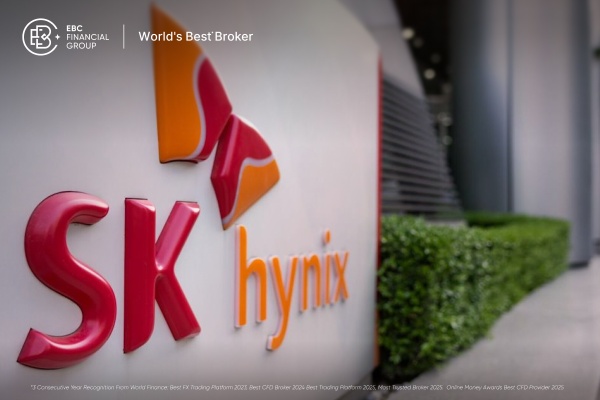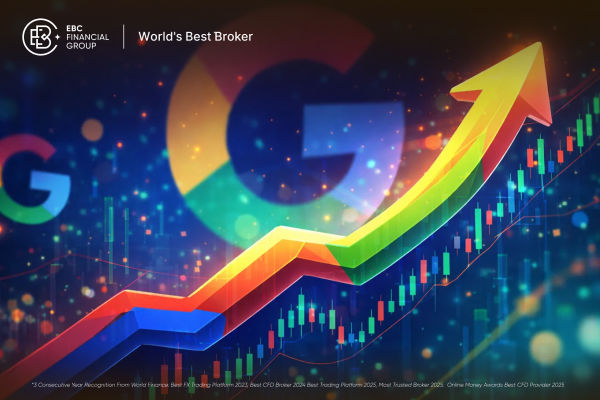Do you know which company was the first to go public in the world? It was the Dutch East India Company, founded in 1602, marking the birth of the concept of going public. Since then, listing has become a standard feature of the financial market. However, for those not involved in finance or investing, the term "listing" may be unfamiliar. In this article, we will explore the different methods of listing, the associated risks, and how companies respond to these challenges.
There are a few things you must know about going public. Going public is when
a previously private company places its shares on an exchange, making them
publicly available for trading in the market.
Why Companies Choose to go Public?
-
One of the main reasons is financing
When a company goes public, it actually raises funds by issuing new shares, a
process called a financing listing.
The benefits of financing and listing are mainly reflected in two
aspects:
Companies can raise funds by selling new shares, which provides financial
support for business expansion and development.
Going public enables a company's shares to be traded on the public market,
providing investors with a platform to buy and sell shares.
Some people may think that going public is just to make money and cash out.
This may be a bit biased. To put it more professionally, going public is a
financing method and one of the main reasons why many large companies choose it.
Generally speaking, by issuing new shares in the public market, companies are
actually seeking financial support to enable them to operate and develop
better.
It can be understood through an example. For example, a milk tea shop is
going to be listed. Before going public, A was the 100% controlling shareholder
of this company. Assume that the company is valued at 10 billion, and before
going public, A chooses to dilute 50% of the shares and issue 100 million new
shares at 100 yuan per share. In this way, if B, C, and D want to buy shares in
Xiaolin Milk Tea Shop, they can buy them at a price of 100 yuan per share, thus
raising 10 billion yuan for the company. At this time, the company's valuation
is $20 billion, and A only holds 50% of the shares. The funds raised can be used
for the company's future development.
-
The second important reason for listing is to cash out
Before the company goes public, the founding team and early investors hold
shares in the company. If A is a founder and owns 100% of the shares of the milk
tea shop, it is actually quite difficult for A to cash out these shares before
the company is listed.
Of course, Person A can try to find someone to sell the shares, but it is not
easy to find someone willing to pay a reasonable price to buy them. Because the
other party may not know A, nor is he familiar with the milk tea shop, and he
lacks trust in A. In this way, even if A lowers the price, it may not be able to
successfully sell the shares, the liquidity will become poor, and the
transaction cost will be high.
Once the company goes public, the situation is completely different. A's
shares become easier to cash in, and transaction costs are reduced accordingly.
In short, listing makes it easier for Person A to sell his shares for cash; that
is, it is easier to cash out. This means that A’s shares become more liquid, and
transaction costs are reduced accordingly, making the entire cash-out process
smoother.
Financing and making money are actually related to the company, but the
benefit of cashing out is more relevant to early founders or early shareholders.
In the past two decades, especially with the rapid development of the Internet,
the value of shares held by early teams has become quite powerful.
We often hear that programmer friends around us joined the early team of an
Internet company and then achieved financial freedom as the company developed
rapidly. Take ByteDance programmer Guo Yu as an example. He joined ByteDance in
2014 or 2015. At that time, the company may not have had that much cash, but it
provided options worth about 500,000. Unexpectedly, in five or six years, the
value of these options increased nearly 200 times. Guo Yu announced his
retirement at the age of 28. Such success stories are not uncommon.
But you also need to be cautious when cashing out. If all stocks are sold as
soon as they are listed, the stock price is bound to fall sharply. For this
reason, early investors usually set a period called a "lockup period" when the
company goes public, during which the shares cannot be sold, usually ranging
from a few months to two years. Moreover, the shareholding information of the
company's major shareholders is public, and their behavior will receive great
attention because it reflects their confidence in the company's future
development.
The founding team needs to be extra cautious when selling shares, as this may
cause panic in the outside world. When a major shareholder of a company starts
selling shares, there is usually a flurry of criticism on the forum, so you need
to take into account the company's image and external reactions when making
decisions and be cautious and prudent.
-
The reputational effect brought about by the company’s listing
This doesn’t just sound good; it’s of huge value to companies, especially
consumer-facing T&C companies. When a company goes public, the word has a
halo effect, giving the company greater credibility in the minds of consumers.
When consumers are shopping, they see an unfamiliar brand. Once they know that
it is a listed company, they will think that it is a big company and will be
less likely to deceive them, so they will be more willing to buy. In addition,
going public not only has a halo effect on the company but also on the company's
executives. When you introduce a friend, if you can say that this is the CEO of
a listed company, your friend will think that this person is very powerful.
-
Reduce the cost of refinancing
After a company is listed, if it wants to continue to develop, it usually
needs to continue to raise funds, which may be loans from banks or issuing
shares or bonds in the secondary market. For a listed company, its borrowing
costs will be greatly reduced because its maturity, credibility, and information
disclosure have been recognized. Let’s take the milk tea shop as an example. If
the milk tea shop is a listed company, when borrowing money from a bank, the
bank may give you a better interest rate for the sake of the listed company. For
another example, for a large company with an extremely high credit rating like
Walmart, the cost of borrowing may be equivalent to or even lower than the
interest rate on U.S. Treasury bonds. This means that the company has an
advantage in terms of funds, which reduces the cost of refinancing. Going public
not only brings more money but also improves the company's reputation. Early
teams can more easily cash out, and the cost of refinancing is also reduced
accordingly.
Why do some large companies choose not to go public?
-
Avoid dilution
Many large companies choose not to go public, such as Dassault and Huawei,
because there is a very large cost for the company or the founding team, which
is the dilution of equity. For example, before the milk tea shop goes public,
Person A has 100% control and can make whatever decisions he wants. But after
the listing, after shareholders like B, C, and D join, A must consider their
opinions when formulating development strategies and no longer has complete
decision-making power. What's worse is that not only do they lose autonomy in
development decisions, they may even be squeezed out of the company. Just like
the potato chip brother, the founder of Lululemon, whom we mentioned before,
after the company went public, capital operations in the public market went back
and forth, and his voice weakened, and he was eventually even voted out of the
company. Therefore, the main reason why some founders choose not to go public is
to maintain control of the company and avoid dilution of their equity.
-
A company's listing requires the disclosure of a large amount of
information
Since there are many public investors after listing, in order to ensure the
safety of their investments, the company's financial information must be fully
disclosed. There is a quarterly report every quarter and an annual report every
year, which must also detail the company's future prospects and development
strategies. In most cases, companies may not be willing to make all information
public because it may involve the company's business secrets, development plans,
etc. But if it is not written, investors may feel that the company has no plan,
and the stock price may fall. Therefore, listed companies need to balance
information disclosure with the protection of trade secrets.
However, information disclosure is not necessarily a bad thing. For example,
JD.com’s listing is mainly for the purpose of disclosing information. Why should
we disclose information? There were too many rumors at the time. There were
always rumors that JD.com’s capital chain was about to break, and JD.com had
many suppliers. Once it broke, the suppliers would be affected. Liu Qiangdong
considered that on the one hand, he wanted to clarify the rumors, but on the
other hand, he also knew that even if he clarified, some people would always say
that he was trying to cover up the capital chain problem, so he simply went
public and made the financial information public so that suppliers could feel at
ease.
-
Time and Money Cost
In addition to equity dilution and information disclosure, going public also
involves direct costs in time and money. In terms of time, generally speaking,
it takes one to one and a half years to go public in the United States, while in
China, the listing process may be longer, even three or four years. This is a
huge project. Some companies have announced that they will go public next year,
and you can feel that the amount of work behind this is huge.
In terms of costs, going public usually requires finding an investment bank.
Investment banks will first take away some fees. For example, if a small company
wants to raise $1 billion, the investment bank may take away $100 million to
$200 million. In addition, the company also needs to hire lawyers and
accountants to prepare for the entire listing, which will also involve a lot of
expenses. Therefore, if there are not tens of millions in the account, it is
basically difficult to complete this task.
The requirements for listing are also very strict. It does not mean that a
company that spends time and money will be able to successfully go public. There
is still a risk of failure to go public. Generally speaking, when listing, there
are certain requirements for the company's profit performance. For example,
Nasdaq may have specific requirements on cash flow, assets, or income, while the
requirements for A-shares are more stringent. A-shares require companies to make
profits when listed, which is one of the reasons why many Internet companies
choose not to be listed on A-shares. Because Internet companies need a lot of
financing from the beginning and invest a lot of money to accumulate users and
traffic, almost none of them, including many Internet companies in the United
States, are profitable when they go public. Of course, profit requirements are
only one of them.
Why do Tech Giants List in the U.S. and Hong Kong?
One reason is time to market. Listings in the United States generally use a
registration system, while China uses an approval system, although China has
recently gradually transitioned to a registration system. So, what is the
difference between the registration system and the approval system? The
registration system means that the company prepares materials and submits them
to the China Securities Regulatory Commission, and after approval, they can be
registered and listed. But the approval system is different. The China
Securities Regulatory Commission will first review the materials and then
conduct an in-depth review of the company after confirming that they are
correct, which will make the entire process longer. And whether it can
eventually be listed on the market is completely decided by the China Securities
Regulatory Commission, and the company can only wait.
Early Internet companies usually rely on funds from institutional investors,
but these investors have already withdrawn their investment. Who would be
willing to wait another three or four years? These Internet companies will also
introduce overseas investors or US dollar funds, which is very important in
There may be problems when the stock goes public. Therefore, these reasons have
led many Internet giants to choose to list in Hong Kong or the United
States.
What are the Costs and Risks of Going Public?
Not only are there costs in the listing process, but the maintenance costs
are also huge. Because information needs to be disclosed after listing, such as
quarterly reports and annual reports, what costs does this bring? These
materials need to be prepared, and listed companies not only need to prepare
their own financial reports but also need to ask an audit firm to conduct an
audit. They can only be released after passing the review. After the financial
report is released, a press conference needs to be organized to disclose this
information. The company also needs to respond to questions from the popular
media, Wall Street analysts, and others. To deal with these, companies need to
have a dedicated investor relations (IR) department to organize the entire
process, answer questions, and maintain relationships. These later maintenance
costs need to be taken into consideration.
In addition to the obvious costs of going public, there is also a huge hidden
cost: the company will be subject to the hijacking of Wall Street and short-term
interests. Because the stock price of listed companies attaches great importance
to development speed, once growth slows down or profits decrease, the stock
price may plummet. This forces company management to work hard to make each
quarter's results look better to meet the stock market's expectations. The
company may originally develop with long-term goals, but after going public, it
is more likely to be driven by short-term interests. The executive compensation
of most companies is directly linked to the stock price, which has also led to
unreasonable increases in executive compensation. Therefore, listed companies
may face some costs that cannot be ignored in their long-term development.
Management tends to pay more attention to the short-term performance of the
company because it may be hijacked by short-term interests. Once short-term
benefits cannot be realized, there may even be some fraud and forgery, just like
Enron. Enron initially made some fine-tuning to make its performance look better
but ended up falling into an abyss, eventually leading to the bankruptcy of
Lehman Brothers.
Public companies also need to cater to Wall Street and maintain a good
relationship with it. Why? Because when ordinary investors buy stocks, they
usually pay more attention to the news and the opinions of Wall Street analysts
rather than delving into the company's financial development strategy. If the
company has to face negative reviews from Wall Street, the stock price could
fall. This not only affects the short-term stock price but also has a more
profound impact on the company's long-term creditworthiness and borrowing costs.
As the public's expectations of the company decrease, the company's
creditworthiness and borrowing costs will increase, and the capital chain may be
broken, which will have a significant impact on the company. Therefore, in order
to maintain their reputation, listed companies need to spend energy maintaining
good relations with Wall Street.
Risk Management for Going Public
-
Build a risk management team
Responsible for monitoring and responding to various risks to ensure that the
company can respond in a timely manner.
-
Conduct regular risk assessments
Evaluate various risks within and outside the company and formulate
corresponding risk management plans.
-
Establish a crisis management plan
Develop a detailed crisis management plan for possible emergencies, including
response measures and communication strategies.
-
Investor Relations Management
Establish good investor relations, communicate with investors regularly,
provide accurate and timely information, and respond to investors’ concerns.
-
Legal compliance training
Provide legal and compliance training to employees to ensure they understand
relevant regulations and company policies and reduce regulatory compliance
risks.
-
Develop a financial strategy
Establish clear financial goals and strategies to ensure the company has
adequate financial stability.
-
Build a resilient supply chain
Build resilience in supply chain management to reduce the risk of business
disruption due to supply chain issues.
-
Regularly assess the competitive environment
Conduct regular competitive analysis to understand market dynamics and adjust
company strategies to adapt to changes.
Ways to Go Public
-
Initial Public Offering (ipo)
Once a company decides to go public, the most common method is to conduct an
initial public offering (IPO). The company raised funds from the public by
issuing shares, introducing its shares to the securities market for the first
time. Before an IPO, companies typically hire teams of investment banks and
lawyers to help them with the offering process. But the cost and time of an IPO
are considerable, so many companies are reluctant to choose this path.
-
Direct listing (DPO)
A direct listing is a relatively new method in which a company raises capital
by listing on a stock exchange without having to issue new shares or wait too
long. Companies can trade their shares directly on the public market instead of
raising capital by issuing new shares. Spotify, Slack, and Coinbase have all
chosen direct listings.
-
Reverse Merger
This method involves an already-public company (a shell company) acquiring a
private company and turning it into a public company. This reverse merger method
can introduce the company to the securities market more quickly than the
traditional IPO process.
-
Special Purpose Acquisition Company (SPAC)
A SPAC is a company formed specifically for the sole purpose of acquiring
other companies, making them indirectly public. SPACs raise money through an IPO
and then find a private company to merge with within a certain period of time.
This approach is known as a "blank check company." This method is simpler than
the IPO process and reduces time and money costs, but it also comes with some
risks. Litigation cases regarding SPACs have also increased in the past two
years, so there are certain risks to this approach. For example, Jia Yueting’s
Faraday Future was listed through SPAC.
-
Secondary Listing
Some companies may, after listing on their original stock exchange, decide to
list on other exchanges to further expand their investor base and market
influence.
Comparison of various routes to the market
| Feature |
IPO (Initial Public Offering) |
SPAC (Special Purpose Acquisition Company) |
Direct Listing |
Equity Crowdfunding |
Reverse Merger (Shell Listing) |
Secondary Listing |
| Applicability |
Mature Companies |
Any Company |
Mature Companies, Startups |
Startups, Small Businesses |
Startups, Corporate Restructuring |
Already Listed Companies |
| Complexity |
High |
Medium to High |
Low |
Low |
Medium to High |
Low |
| Timeline |
Relatively Long |
Relatively Short |
Relatively Short |
Relatively Short |
Relatively Short |
Relatively Short |
| Cost |
Expensive |
Medium to High |
Relatively Low |
Relatively Low |
Medium to High |
Low |
| Fundraising Mechanism |
Issuance of New Shares |
Acquisition by SPAC |
Sale of Existing Shares |
Small Investments, Equity Financing |
Share Exchange in Merger |
New Share Issuance, Secondary Market Trading |
| Market Valuation |
Determined by IPO Price and Demand |
Pre-determined by SPAC and Target Company |
Market-determined |
Market-determined |
Determined by Transaction |
Market-determined |
| Liquidity |
Usually High |
High |
Depends on Existing Shareholders' Trading Interest |
Limited |
Usually High |
High |
| Control |
Relatively High |
Low |
Relatively Low |
Relatively Low |
Depends on Transaction Structure |
Relatively Low |
| Risks |
IPO Market Fluctuations, Pricing Risks |
Target Company Selection, Post-Merger Risks |
Market-determined Risks |
Investor Risks |
Transaction Merger Risks |
Secondary Market Fluctuation Risks |
| Purpose |
Capital Raising, Public Market Exposure |
Expedited Listing, Reduced Public Exposure |
No Need for Capital Raising |
Small Investments, Support for Startups |
Corporate Restructuring, Financing |
Market Expansion, Financi |
From the various ways to go public, risks, and countermeasures, we can
understand that going public is an important way for companies to obtain funds
and improve credibility, but it is also accompanied by a series of costs and
risks. Companies need to clearly consider their own needs and future development
plans when making decisions.
Disclaimer: This material is for general information purposes only and is not intended as (and should not be considered to be) financial, investment or other advice on which reliance should be placed. No opinion given in the material constitutes a recommendation by EBC or the author that any particular investment, security, transaction or investment strategy is suitable for any specific person.














